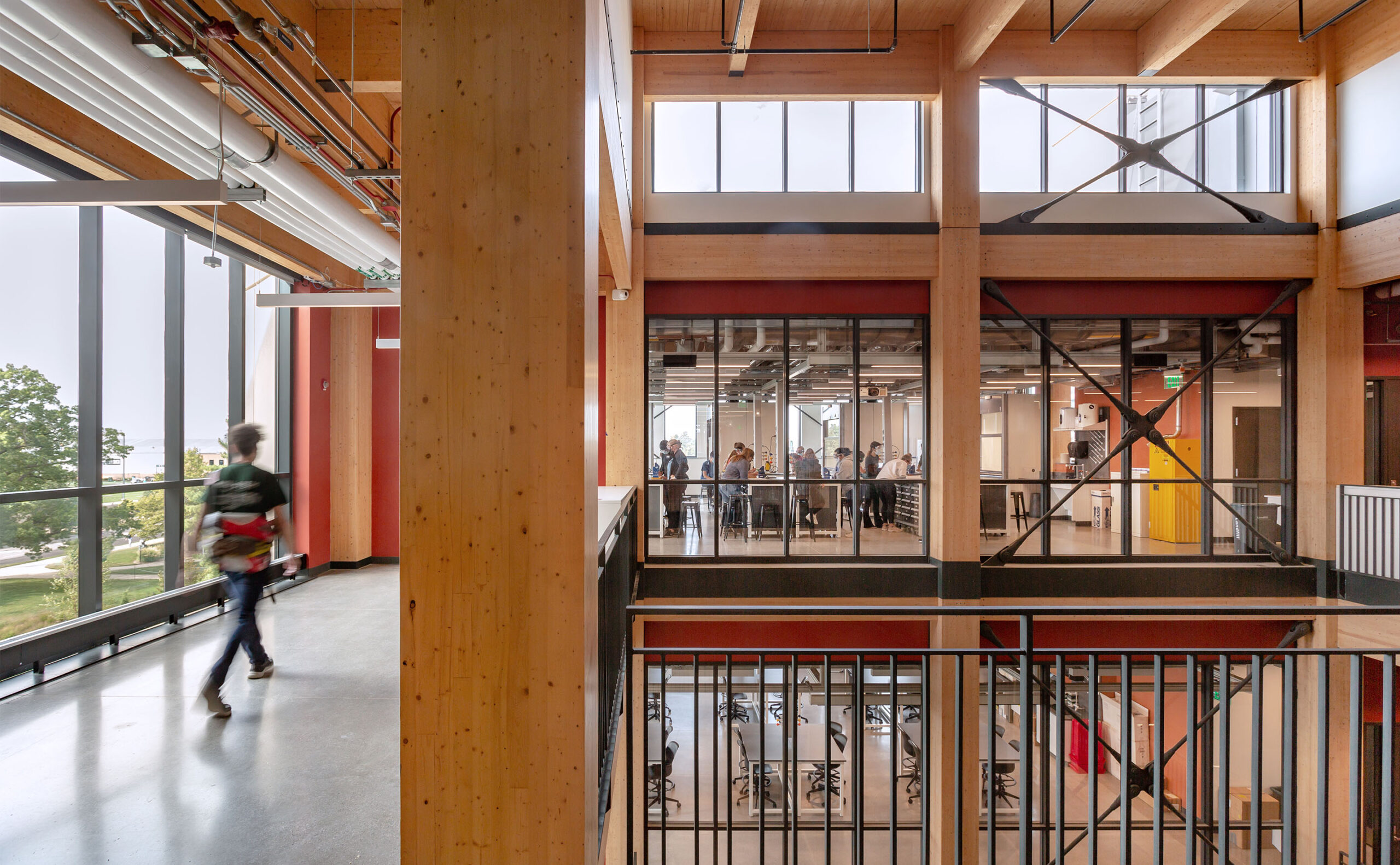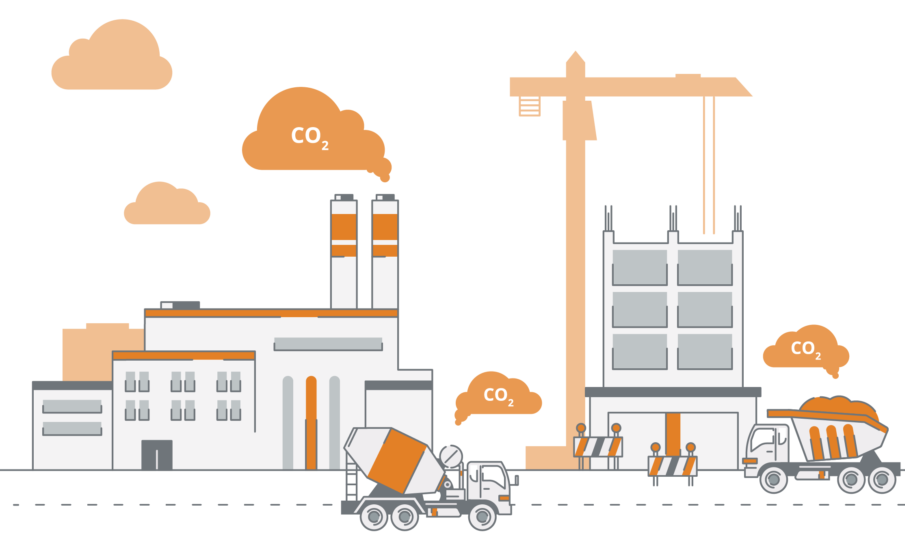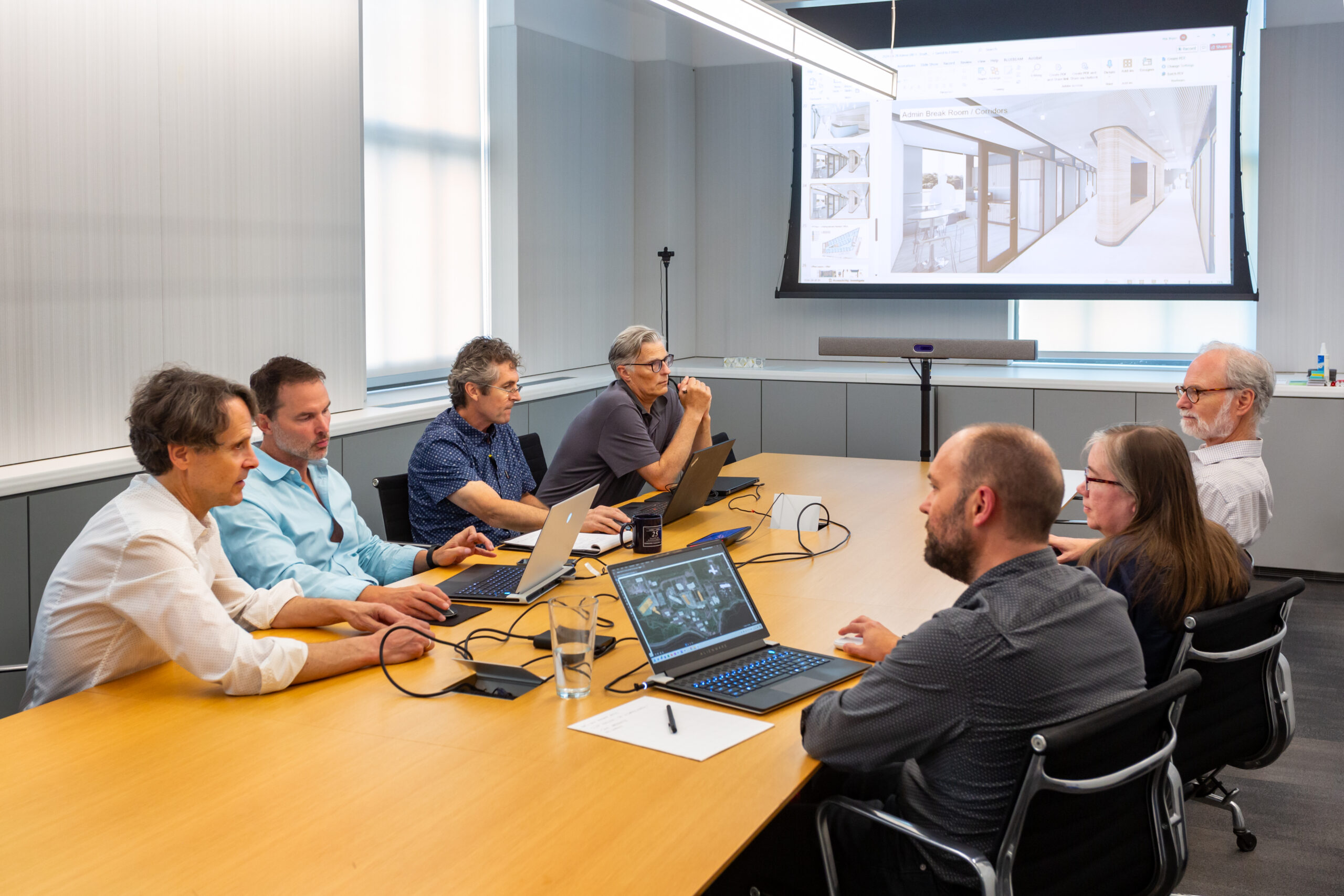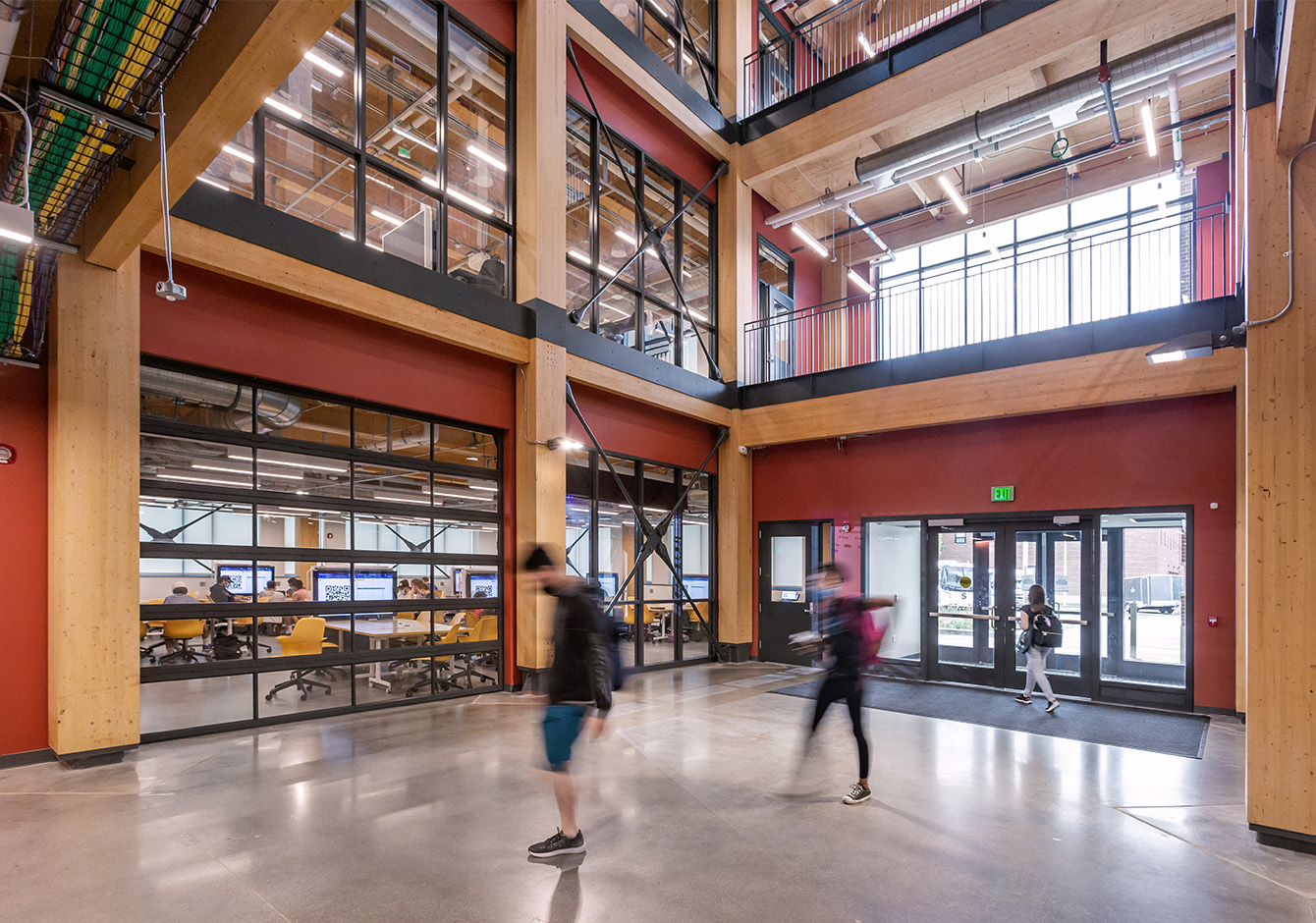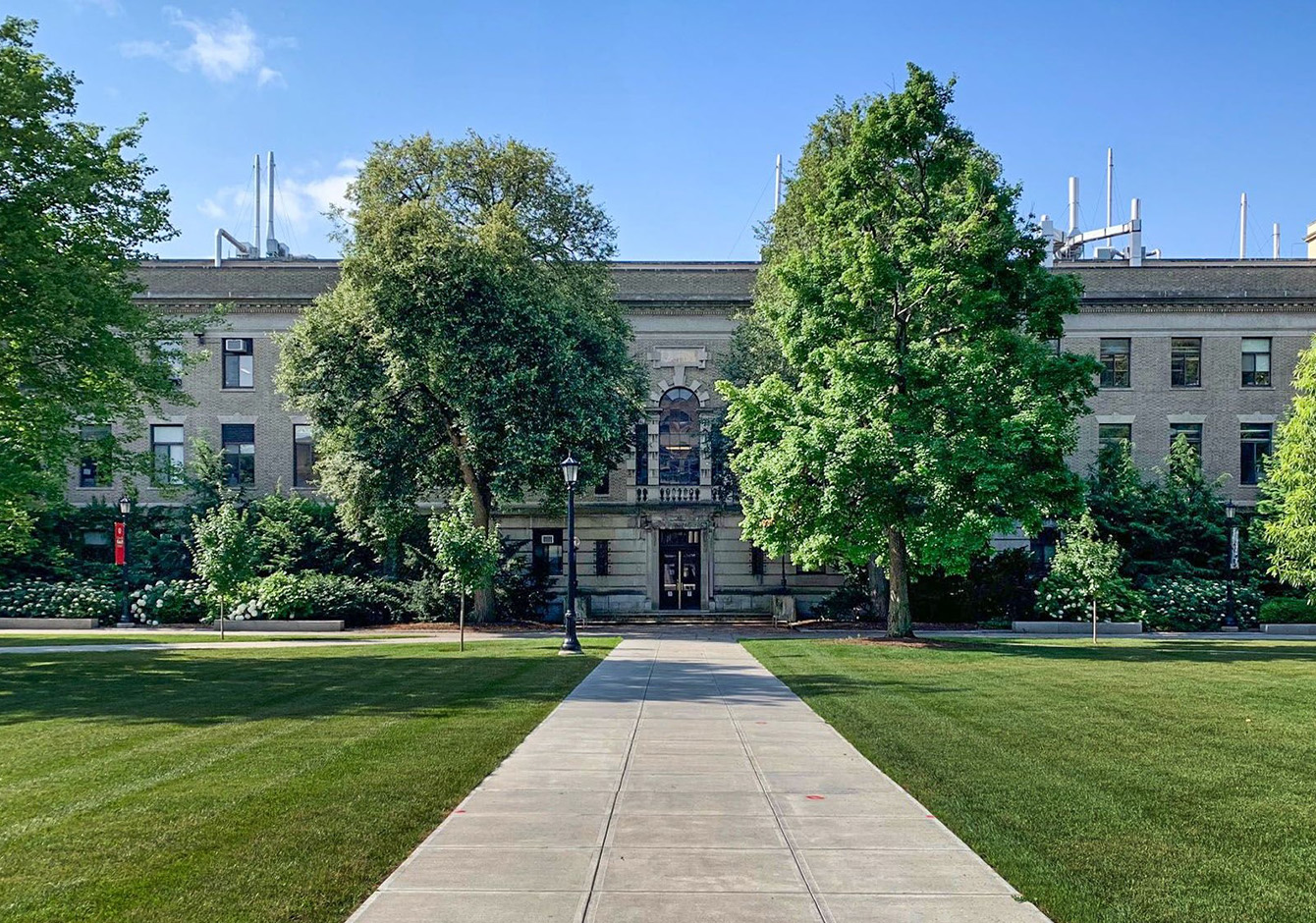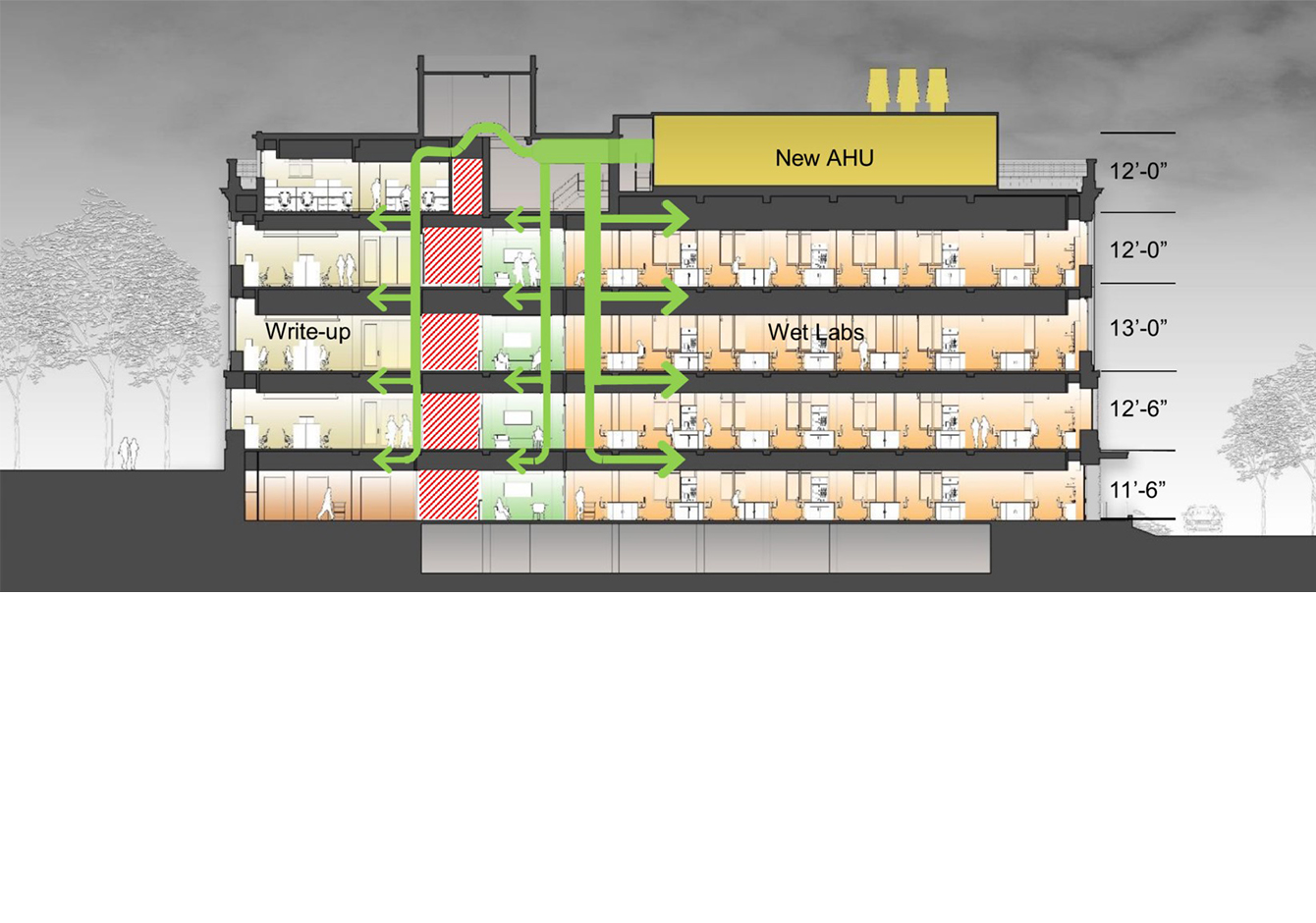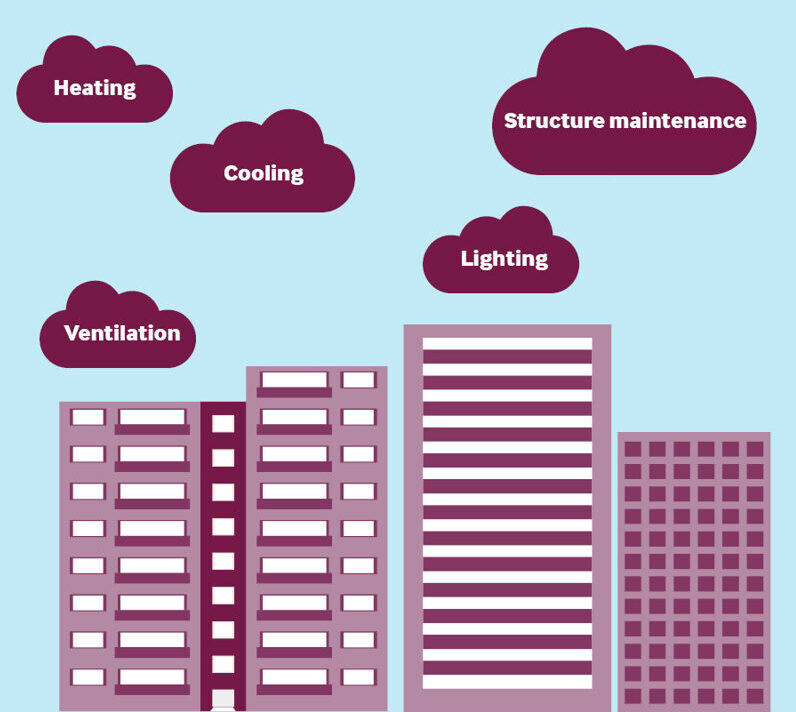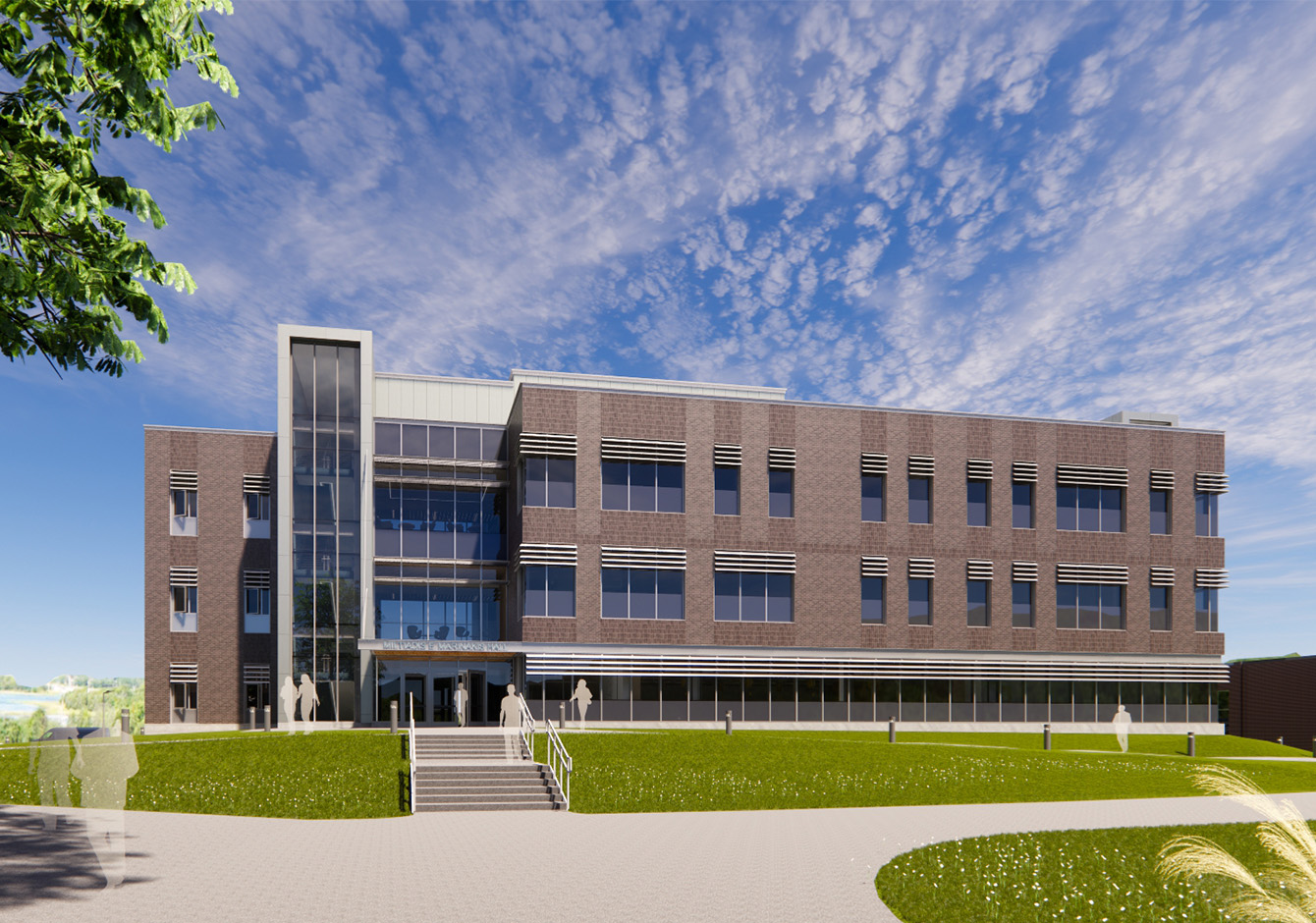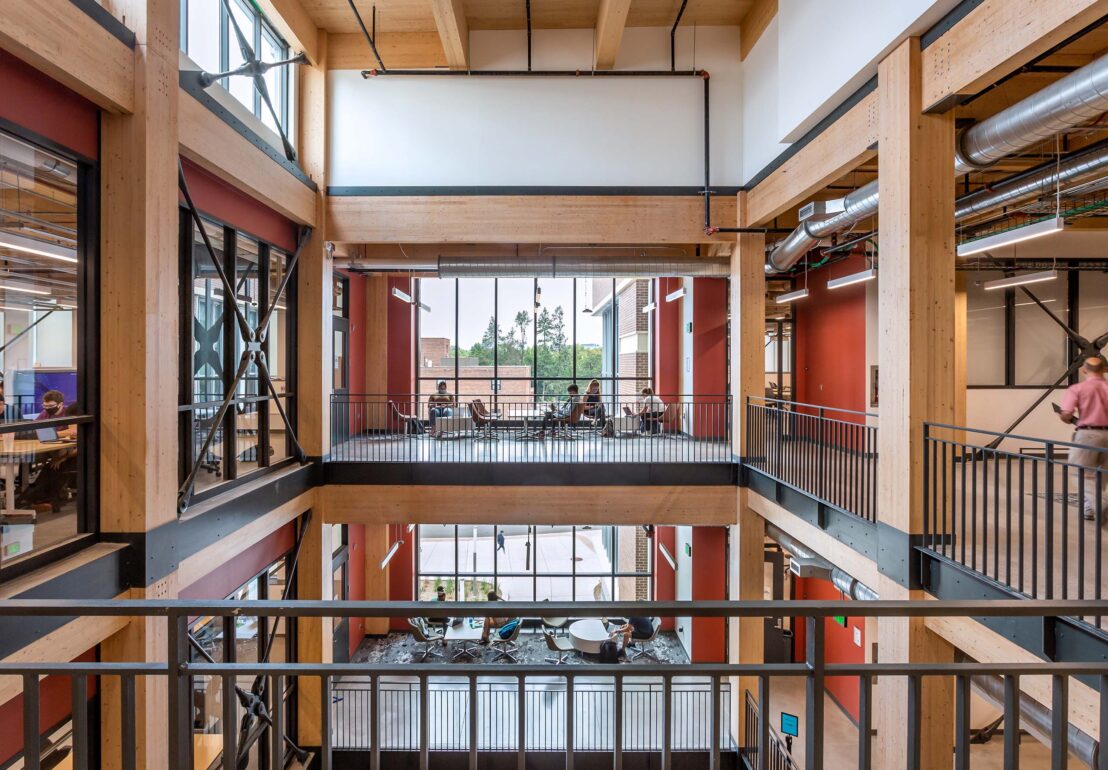We focus on key innovative approaches to construction and material selection to drive down the embodied carbon of our buildings:
- New building vs. renovation: evaluate the environmental impact of new construction versus renovating existing structures to minimize carbon emissions.
- Materials optimization: utilize low-carbon alternatives such as low-carbon concrete and steel, optimize glazing and envelope design, and choose finishes and casework with lower carbon footprints.
- Carbon-storing materials: embrace materials like wood and bio-based products, including mass timber, which have the capacity to store carbon over their lifecycle.
- Futureproofing: design laboratories and other facilities with an eye toward adaptability to accommodate future changes with minimal renovation.
